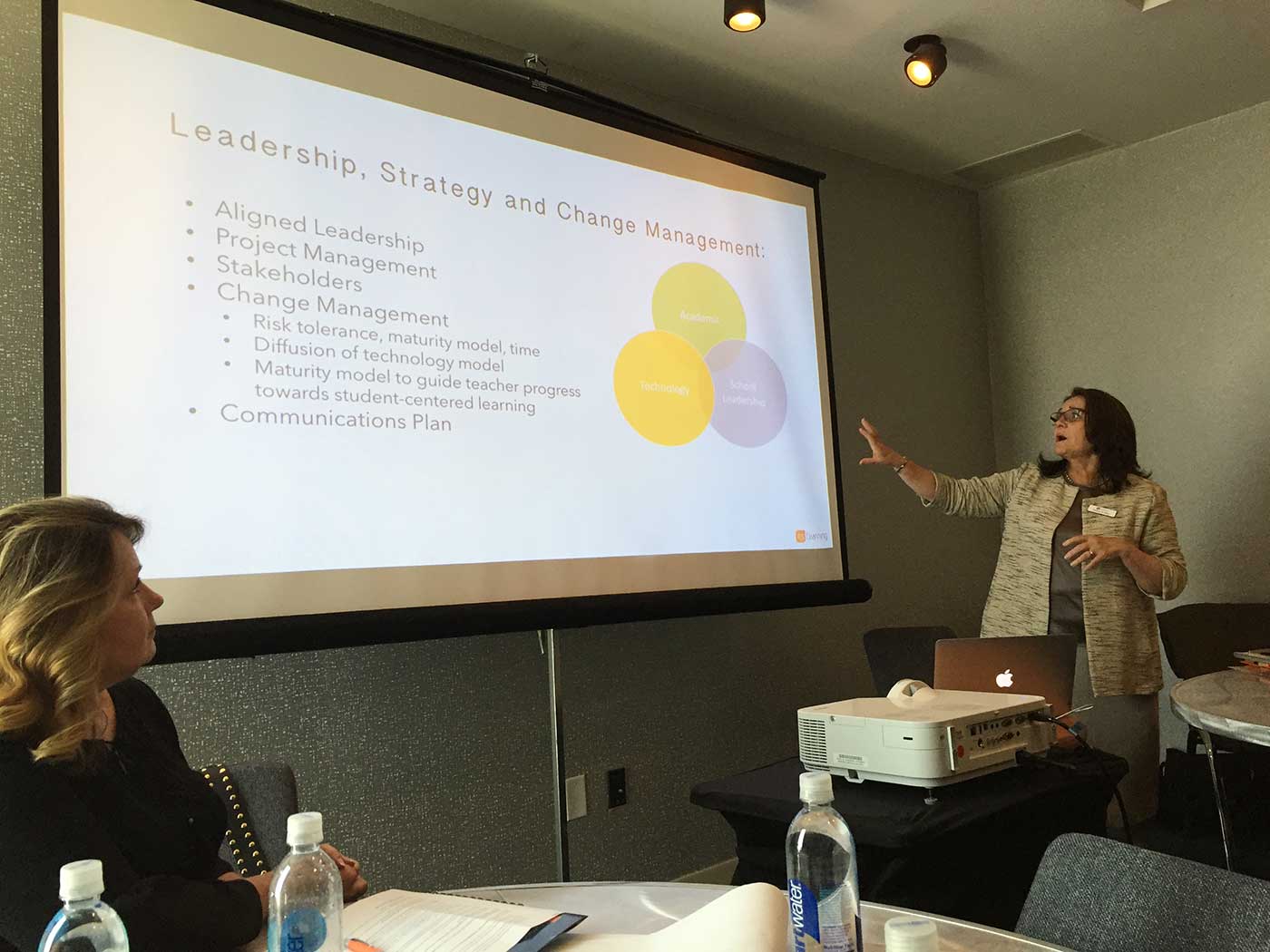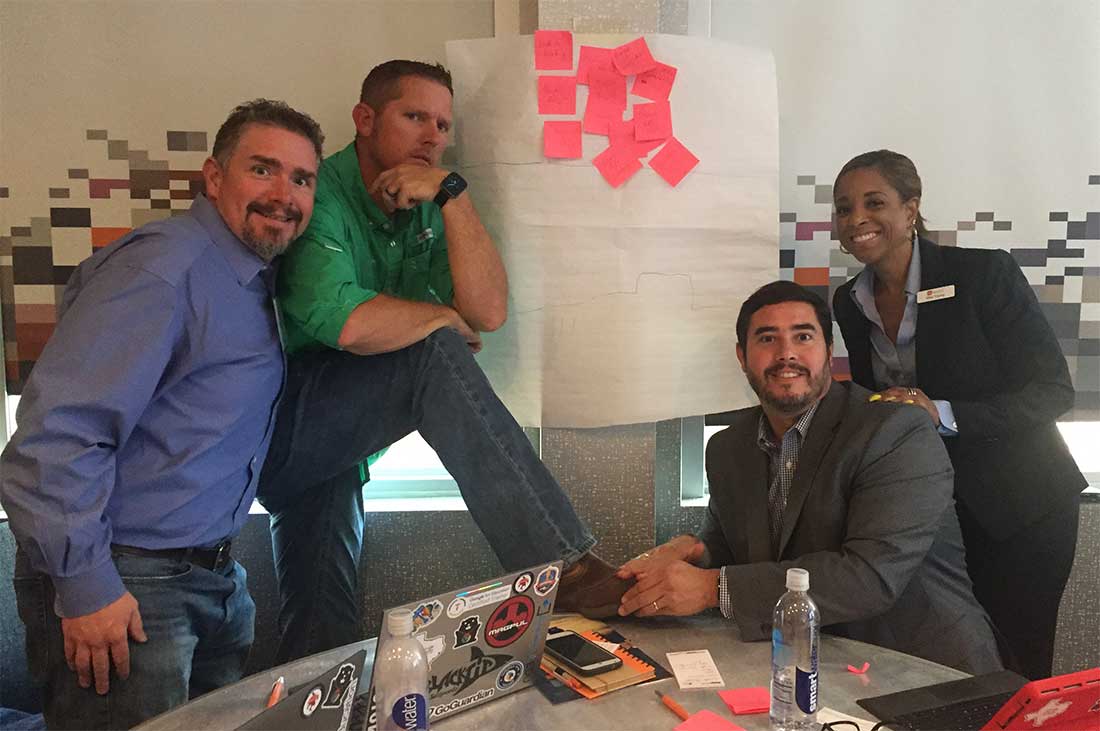Realizing Data-Informed, Student-Centered Learning

At the recent Tech & Learning Live events in Dallas and Princeton, T&L partnered with itslearning to host a pre-conference event called "Realizing the Promise of Data-Informed, Student-Centered Learning.” School leaders from curriculum and technology gathered to discuss how districts can use technology to make life easier for teachers while getting students college and career ready.
The conversation started with a presentation from Beatriz Arnillas, former Director if IT, Education Technology for Houston Independent School District (TX) and Senior Education Advisor. Beatriz shared Houston’s story about what happened when the district moved from a static to a dynamic digital curriculum.

As the largest school district in Texas with 215,000 students, the district faced challenges including poverty and language barriers. The district launched its “PowerUp” program in 2013 and introduced the itslearning platform in 2014 to deliver content online 24/7 with a searchable digital library that included 1.5 million learning objects. The expanded access to content, leadership commitment and variety of resources available helped one of the district high schools move from one that PBS Frontline identified in its “Dropout Nation” program, to one that was upgraded by the Houston “Children at Risk” report of 2016 to a “B-”.
Next, Dr. Robert Elwell, Director of Learning Solutions for itslearning, led a group activity that asked attendees: what are your biggest challenges to realizing data-informed, student-centered learning? He framed this question using a 2017 NMC/CoSN Horizon Report that places school district challenges into three categories:
- Solvable: Those that we understand and know how to solved and know how to solve
- Difficult: Those that we understand but for which solutions are elusive
- Wicked: Those that are complex to even define, much less address
Attendees broke into small groups and wrote down some of their solvable, difficult, and wicked challenges. Some of the most difficult challenges included:
- Lack of funding
- Lack of time
- “If it ain’t broke, don’t fix it” mindset
- Digital divide
- Leadership changes
- Teacher buy-in
After a lively discussion, attendees heard from some itslearning customers about how they solved some of these challenges by transitioning to a digital curriculum.
Martha Barwick, Coordinator of Instructional Technology for the Harford County Public Schools, discussed one of her district’s challenges: limited time for face-to-face professional development. They solved this problem by offering PD using the itslearning digital platform. Because PD could be offered on-demand whenever the teachers had time, they were able to sustain ongoing professional development that was accessible anytime/anywhere.
Tools and ideas to transform education. Sign up below.
Robert Bayard, Chief Technology Officer of Clear Creek Independent School District and Susan Silva, Executive Director of Curriculum and Instruction, shared one of their biggest challenges: sustaining and maximizing a 1:1 program. The solution? Transparent planning. By using one digital platform, the district was able to improve collaboration between departments (Curriculum, Finance, Technology), share expectations district-wide, and implement data-informed professional learning.
Michael Jamerson, Director of Technology for 12,000 student Bartholomew Consolidated School Corporation of Indiana faced a teacher buy-in challenge of educators with an “I can wait it out” mentality. Their multi-pronged approach to engaging the teachers started at the building-level, with tech teams delivering monthly training events through the itsLearning online platform. They then “burned the ships” making this one sole access path to digital curriculum (while keeping the core framework consistent with existing instruction) and created accountability by incorporating as a component of teacher evaluations. Celebrating success stories and the addition of eLearning Days (where students can attend school via digital devices during inclement weather or teacher PD days) further encouraged reluctant participants.

In Fort Worth ISD, the sixth largest school district in Texas, Assistant Superintendent of Technology, Becky Navarre and Khechara Bradford, Assistant Superintendent, Curriculum and Instruction faced inherent challenges with 80% of their 87,000 students being economically disadvantaged. Their main education goals – early literacy, middle years’ math and college/career readiness – were impeded by both what was being taught (curriculum) and how it was being taught (pedagogy). Turning to a SAMR model of Substitution, Augmentation, Modification and Redefinition, educators could share lessons, project ideas and examples to support teacher planning and seriously integrate technology into the classroom.
Did we solve all of our challenges at this event? Of course not. There are too many unknowns in the complicated, ever changing world of a K-12 school district. But, we did come up with some ways that a dynamic digital portal can address some of these challenges by providing anywhere, anytime access to a wealth of resources.
Christine Weiser is the Content and Brand Director for Tech & Learning, and has been with the company since 2008. She has reported on education for most of her career, working at Scholastic and Gale Publishing before joining Tech & Learning. Christine is also an author and musician, and lives in Philadelphia with her husband and son.
